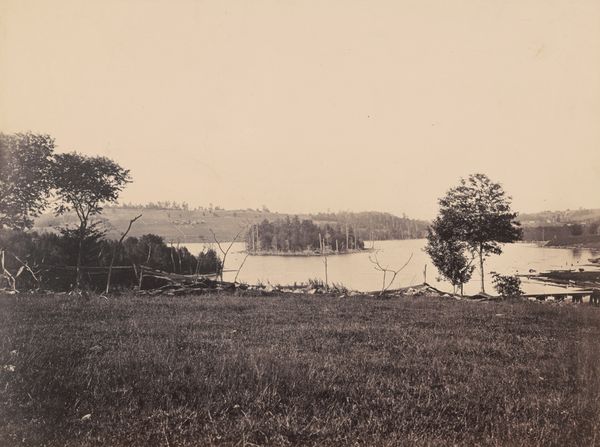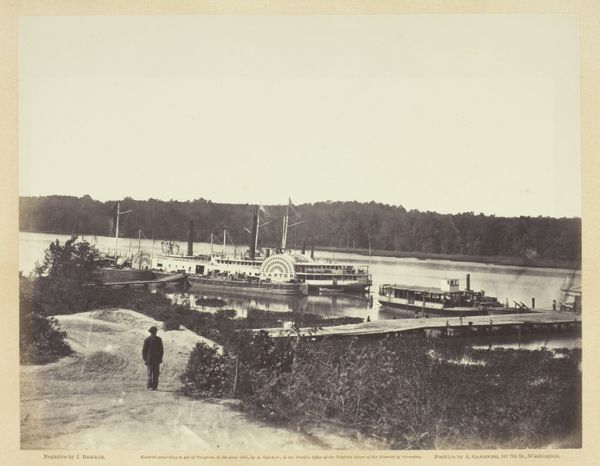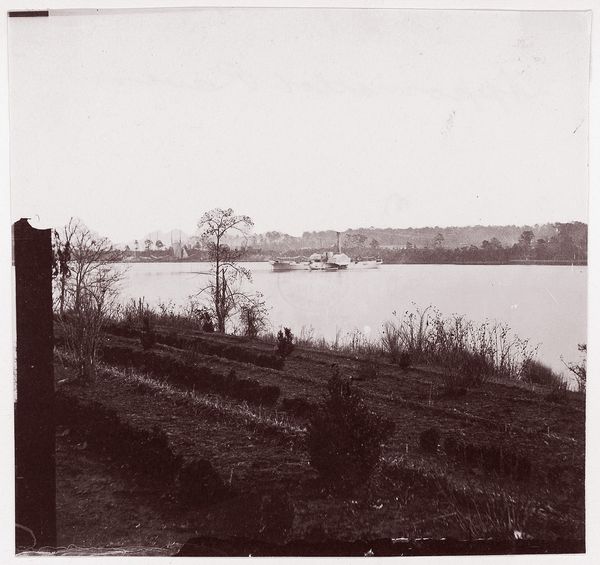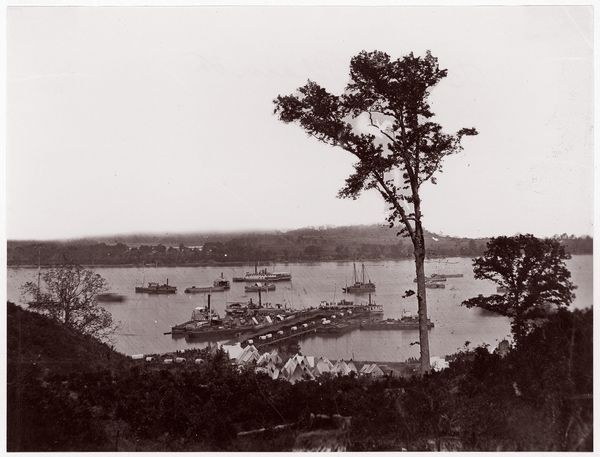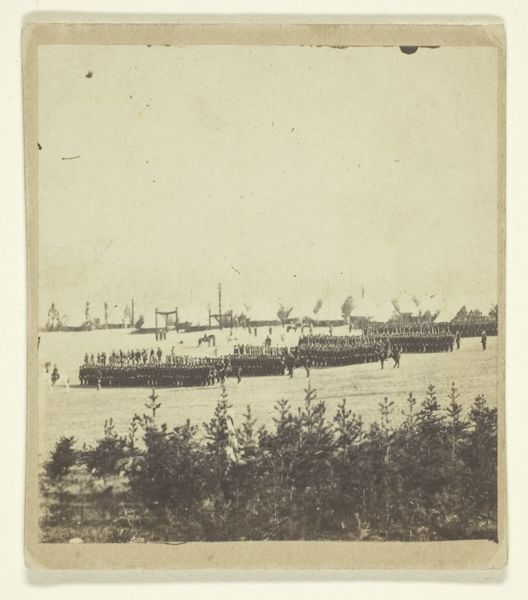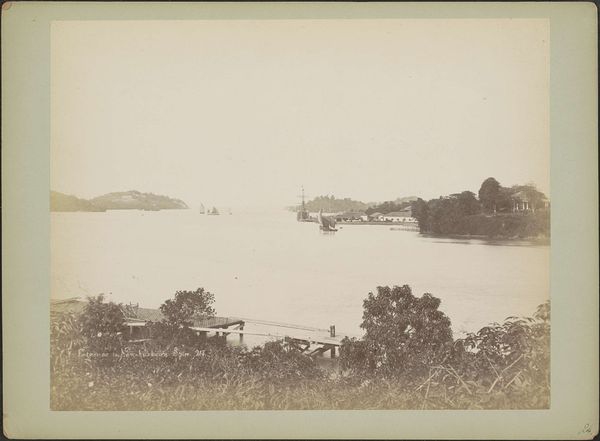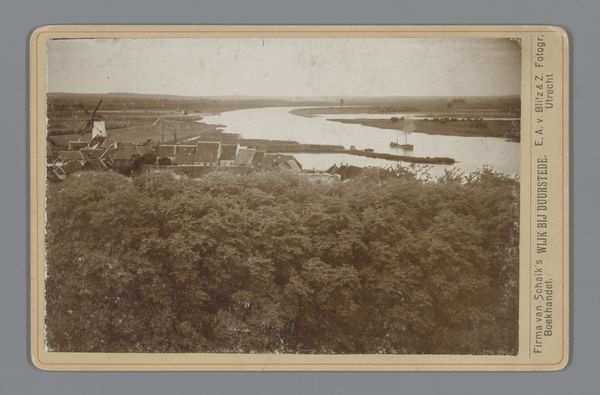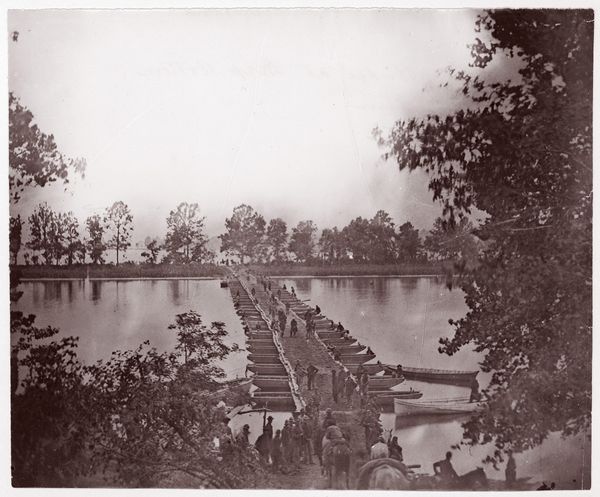![[Lower Wharf from Above, Belle Plain, Virginia] by Timothy O'Sullivan](/_next/image?url=https%3A%2F%2Fd2w8kbdekdi1gv.cloudfront.net%2FeyJidWNrZXQiOiAiYXJ0ZXJhLWltYWdlcy1idWNrZXQiLCAia2V5IjogImFydHdvcmtzLzIzNGM4NjdhLWNkZDUtNDQ4MS1iNTdjLThlNzU0ZDA5YTFhNi8yMzRjODY3YS1jZGQ1LTQ0ODEtYjU3Yy04ZTc1NGQwOWExYTZfZnVsbC5qcGciLCAiZWRpdHMiOiB7InJlc2l6ZSI6IHsid2lkdGgiOiAxOTIwLCAiaGVpZ2h0IjogMTkyMCwgImZpdCI6ICJpbnNpZGUifX19&w=3840&q=75)
[Lower Wharf from Above, Belle Plain, Virginia] 1864
0:00
0:00
Copyright: Public Domain
Editor: This is Timothy O'Sullivan’s "Lower Wharf from Above, Belle Plain, Virginia," taken in 1864, using a gelatin-silver print. I’m struck by the quiet stillness of this wartime landscape. How very strange to consider the backdrop. What details capture your attention when you look at it? Curator: The atmospheric perspective is powerful, isn’t it? The way O'Sullivan uses depth to draw us in, almost as if we're discovering this scene for ourselves. See how the foreground, almost a tangle of raw nature, contrasts with the neat rows of tents and the orderly ships in the distance? It feels almost as though nature is indifferent to mankind's events. Doesn’t the starkness suggest the vulnerability of these figures against the backdrop of an immense conflict? Editor: It’s interesting you focus on that contrast. I hadn’t really considered that tension between the ‘raw nature’ and ‘mankind’s events’. I see what you mean. Curator: I find myself wondering about those figures, what their lives were like outside this moment, their hopes. Think about O’Sullivan too, lugging his equipment across battlefields to capture these scenes – what compelled him? This wasn't about glorifying war, but maybe showing its human cost. Editor: I suppose a photographer’s perspective is completely different than a painter's view, no? Capturing reality without the same filter, literally a “snapshot”. The lack of embellishment seems impactful. Curator: Exactly. It’s reality, not filtered but captured and still offering a certain sublime drama and artistic interpretation, doesn't it? Maybe O’Sullivan aimed to allow viewers a contemplative moment. Editor: Definitely a new perspective. It encourages one to consider the personal element during large, historical conflicts, from both the soldiers and even the artist himself. Thank you for your perspective!
Comments
No comments
Be the first to comment and join the conversation on the ultimate creative platform.

